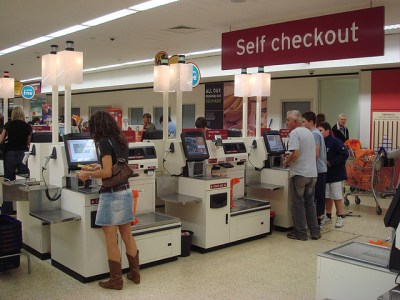There is a lot to be said for replacing certain kinds of jobs with robots. Most people would agree that replacing physical human labor with automation is a good thing. It’s especially good to automate the dangerous kinds of labor like some facets of factory work. What about automation in fields that require more mental labor, where physical strain isn’t the concern? Is replacing humans really the best course of action? A year ago, a video called Humans Need Not Apply set forth an explanation of how robots will inevitably replace us. But that narrative is a tough sell.
Whether it is even possible depends on the job being automated. It also depends on how far we are able to take technology, and the amount of labor we are willing to offload. Automation has been replacing human workers in assembly and manufacturing industries for years. Even with equipment and upkeep expenses, the tireless nature of robotic workers means dramatically lower overhead for businesses.
Many of the current forms of factory automation are rather dumb. When something goes wrong and their task is compromised, they keep chugging away. That costs time and money. But there are companies out there producing robots that are better on many levels.
May Your Robot Overlords Be Cute and Cuddly
 In 2013, Rethink Robotics
started filling orders for a new line called Baxter. They are a class
of general purpose robot that can be programmed to do many kinds of
manual tasks. Baxter bots have vision, and they can learn how to do a job simply by watching. They don’t need to be programmed in the traditional sense.
In 2013, Rethink Robotics
started filling orders for a new line called Baxter. They are a class
of general purpose robot that can be programmed to do many kinds of
manual tasks. Baxter bots have vision, and they can learn how to do a job simply by watching. They don’t need to be programmed in the traditional sense.Baxter even has a face – a screen that shows different expressions depending on his state. When he’s in the midst of a task, his eyes are cast downward. If something goes wrong, he stops what he’s doing. His cartoon face appears sort of shocked, then sad. He goes into safe mode and waits to be fixed.
If workers in manufacturing industries have anything at all to worry about in the near future, it is robots like Baxter. He’s streets ahead of bigger, dumber automatons for several reasons. Baxter runs Robot Operating System (ROS), which is completely open source and runs on standard PC hardware. Older ‘bots are graceless single purpose behemoths compared to Baxter. He is loaded with sensors and cameras that allow him to safely work side by side with humans, doing pretty much anything that fits his range of motion and tool attachments. In a way, Baxter is a kind of Arduino for companies that want to experiment with automation.
Baxter isn’t perfect, though, not even close. He would probably need several more layers of finesse and some decision-making skills before he could be counted on to assemble Big Macs.
I Need a Price Check on Brawndo

Self-checkouts seem like a good idea because they provide more possible points of exit. They’re supposed to cost the company less money overall. But the situation is not as simple as ‘automation costs less’.
Many stores have installed self-checkouts only to remove them later. They make theft easier, and they have proven to lower overall customer satisfaction. It’s all fun and games until your coupons won’t scan and you can’t find the PLU for kumquats. Every frustration adds time to transactions, which holds everyone up.
Even if businesses replace human cashiers with self-checkouts as far as the eye can see, they still need humans to watch over the transactions. In the fantasy land where every self-checkout functions perfectly all the time and operates at an iOS-for-toddlers level of simplicity, the transactions still need to be monitored.
Besides, plenty of people will always prefer to interact with a human cashier. They will want to buy their milk and toilet paper from the brick and mortar stores no matter how poorly lit and dystopian they may become.
What Color is Your Parachute?
Replacing humans is a really difficult endeavor, even on a small, specific scale. Forget all the complex sensory and collision avoidance advantages of Team Humans. We will likely emulate all of that in due time. The big reasons not to worry are much simpler than that.Automation saturation is a simple matter of economy. The thing is, robots make far better workers than they do consumers. This is problematic when you consider that most economic models require both workers and consumers. If large groups of people are unemployed, that means large groups of people are spending as little money as possible to survive, and the economy stagnates.
Even if we get to the point where advanced Baxter-bots are showing each other how to do things and down-voting each other on their robotic Stack Exchange, humans will always be necessary at some level. We may be a reckless and hedonistic species, but we’re not going to replace ourselves into extinction. That’s just silly. Someone still has to design robots, train them, fix them, and streamline their processes. Jobs will be created along the way, some we can’t even imagine.
For at least the foreseeable future, only humans care whether automatons improve technologically. Only humans will drive it forward. As long as humans are making the decisions, humans will remain in the equation, for better or worse.


0 comentarios:
Publicar un comentario